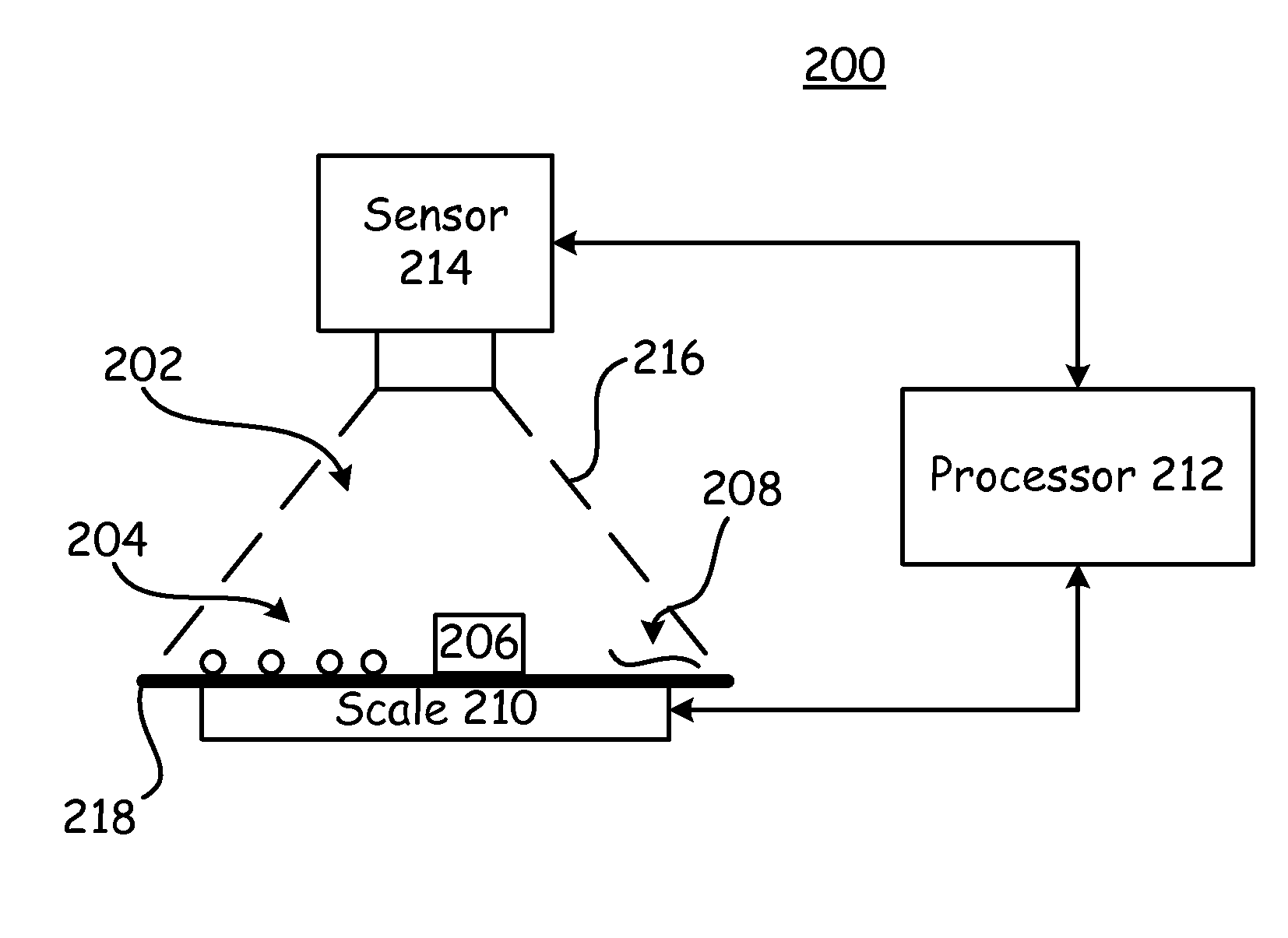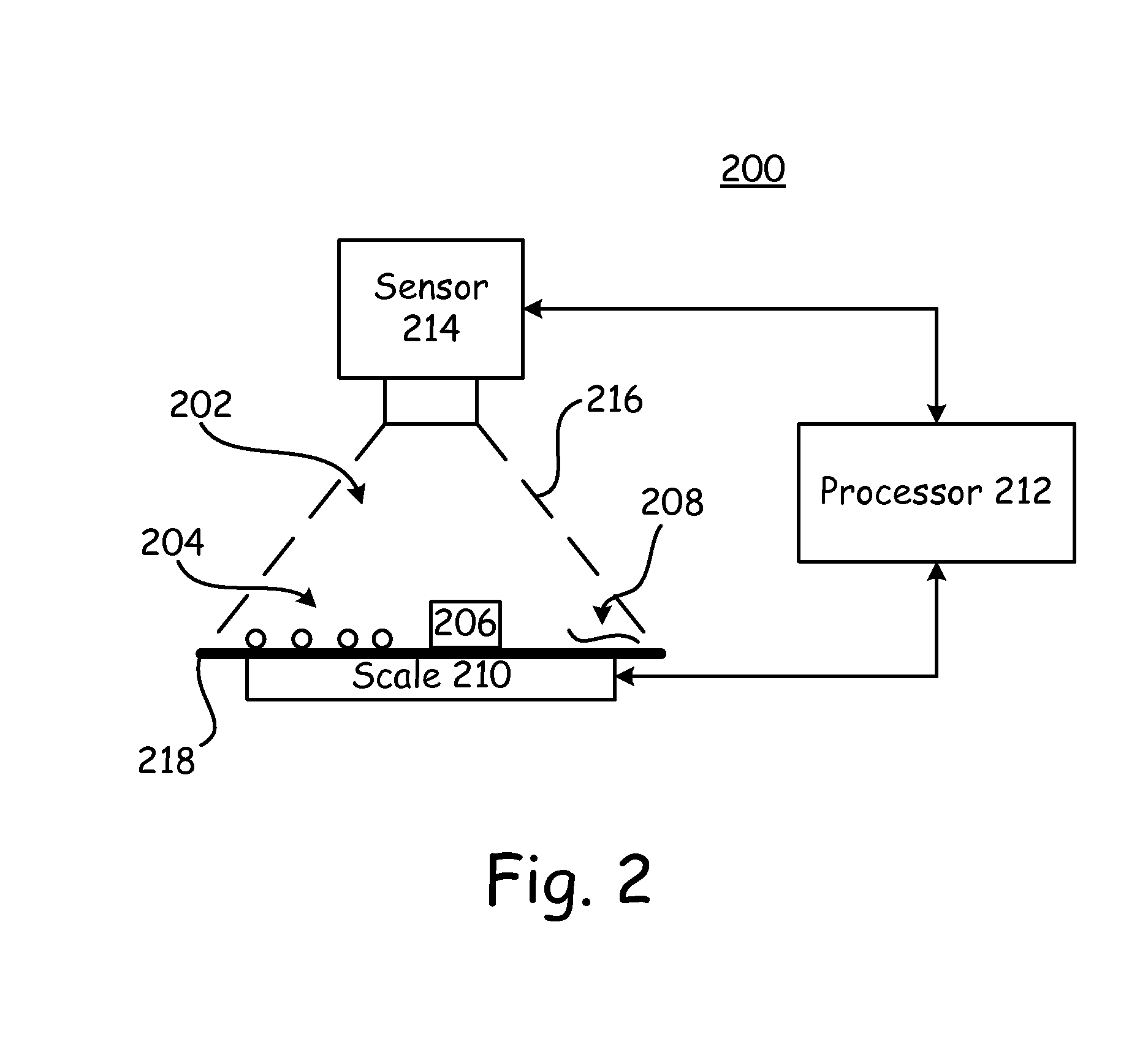Visual weight compensation
a visual and weight compensation technology, applied in the field of fiber processing, can solve the problems of affecting the quality of the finished product, the relative difficulty of separating the fiber from the trash in a mixed volume, and the process taking a longer time than desired, so as to achieve the effect of quick, easy and automatic generation
- Summary
- Abstract
- Description
- Claims
- Application Information
AI Technical Summary
Benefits of technology
Problems solved by technology
Method used
Image
Examples
Embodiment Construction
[0013]With reference now to FIG. 1, there is depicted a flow-chart of a method 100 for correcting the weight of a mixed volume of material according to an embodiment of the present invention. The mixed volume is weighed, as given in block 102. This weight can be accomplished in a variety of different ways. For example, the mixed volume can be directly weighed with a gravimetric device like a scale, or weighed with a balance. Whatever method is used, this initial weight of the mixed volume is designated herein as the total weight.
[0014]An image is then created of the mixed volume, as given in block 104. In some embodiments, the mixed volume is scattered across a surface, such that all components of the mixed volume can be readily seen from one direction, such as from above the mixed volume. In this manner, the individual components of the mixed volume are not hidden, one by another, from the view-point of the imaging device. In some embodiments a single optical visible-light image fr...
PUM
 Login to View More
Login to View More Abstract
Description
Claims
Application Information
 Login to View More
Login to View More - R&D
- Intellectual Property
- Life Sciences
- Materials
- Tech Scout
- Unparalleled Data Quality
- Higher Quality Content
- 60% Fewer Hallucinations
Browse by: Latest US Patents, China's latest patents, Technical Efficacy Thesaurus, Application Domain, Technology Topic, Popular Technical Reports.
© 2025 PatSnap. All rights reserved.Legal|Privacy policy|Modern Slavery Act Transparency Statement|Sitemap|About US| Contact US: help@patsnap.com



